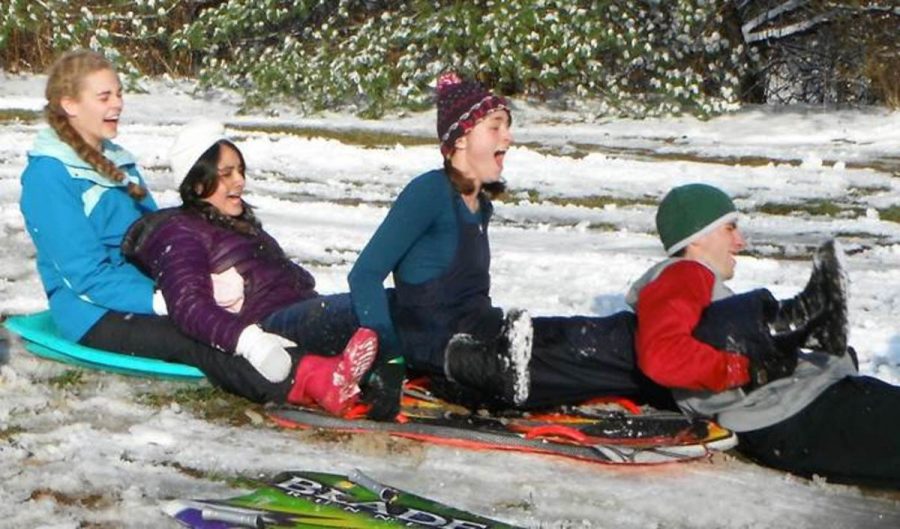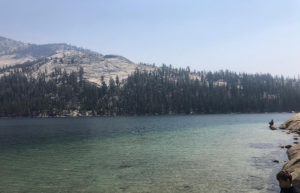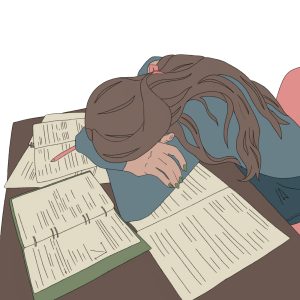Calamity days are no more
Students utilize their snow day as an excuse to go sledding. “What started as a few friends wanting to have a snowball fight became an escape from the notorious homework load of a weekend. Much to our surprise, we ended the day surrounded by many of our closest friends and filled with new fond memories,” said graduate Alora Reiff. Reiff along with graduates Gabriela Godinez-Feregrino, Ryan Stonerberger and Emily Winchell sat on multiple sleds holding each other’s legs as they rolled down in hill in Dulle Park.
September 17, 2014
It is true; schools in Ohio will no longer have calamity days. Ohio has now switched from a required number of school days to a required number of hours in school. Instead of making up missed days, schools will now have to make up missed hours from earlier in the year.
Though we will not have any more calamity days, this does not mean that school will not still be cancelled or delayed during inclement conditions. It just means that every time we do have a delay or cancellation, we are either two or seven hours closer to making up extra hours later in the school year.
Do not be too afraid, many schools, including SHS, have well over the minimum hours required. This means having less time to make up later in the year should school be delayed or canceled.
“I think that the new policy is a bit pointless. The Ohio Department of Education (ODE) is counting on this winter being much worse than the previous one and if we do not use up more than five calamity days then the new policy will have no new effect for this year,” sophomore Jonah Kim said.
The Superintendent of Public Instruction for the ODE, Richard A. Ross, released the new plan on March 18, 2014 for the 2014-15 school year. According to this plan regarding calamity days, SHS must be open for instruction for at least 920 hours per year.
Each school day is seven hours from start to finish and the law requires that we attend school for a minimum of 180 days each year. That all adds up to a total of 1,260 hours each year. If you do the math, you will find that we have approximately nine extra days to use up in calamity hours per year.
According to the ODE, one way to make up missed school hours is to use blizzard bags. Beginning in the 2014-15 school year, schools will provide guidelines indicating how they will make up the missed hours, instead of days, up to the equivalent of three full school days.
Blizzard bags may only be used when it is necessary to close the school because of disease epidemics, hazardous weather conditions, failure of school buses or other equipment necessary to school’s operation damage to a school building or other temporary circumstances due to utility failure altering the school building.
“I don’t like doing blizzard bags on snow days, I’d rather relax on a day with no school.” sophomore Chelsea Kinney said.
Although Ohio has their hour-based requirements for school, border states such as Michigan and Pennsylvania are a bit different.
In Michigan, the schools have both a minimum amount of hours and a minimum amount of days. Current state law issued by the Michigan Department of Education requires school districts to be in operation for at least 1,098 hours in the 2013-14 school year. The districts must also provide a minimum of 170 days or the number of days offered in 2009-10, whichever number is greater.
In Pennsylvania the policy is a bit different from both Ohio and Michigan. Pennsylvanian schools that cannot maintain 180 days of school must complete at least 990 hours for grades seven through twelve.
According to the 2015 edition of the Farmers’ Almanac, the winter of 2014–15 will be very similar to last year and about 75 percent of the nation will see below-average temperatures. The coldest temperatures are predicted to be found from the Northern Plains into the Great Lakes.
The coldest temperatures of the season will come during the final week of January and will continue into the first week of February, when frigid arctic air drops temperatures across the Northern Plains to perhaps 40 below zero. As the frigid air blows across the Great Lakes, snow showers will drop heavy amounts of snow to the areas around the Lakes.
“I want this winter to be a whole lot more intense than it was last year even if that means having to make up extra days in the summer because that means we get to miss more school during the year,” sophomore Evan Weisser said. Despite the fact that many students want this winter to be more intense, not everybody does.
“Although I do enjoy having snow days very much, I’d rather this winter be less intense because school already ends quite late and I don’t want to shorten my summer break even more,” freshman Zackary Berger said.







